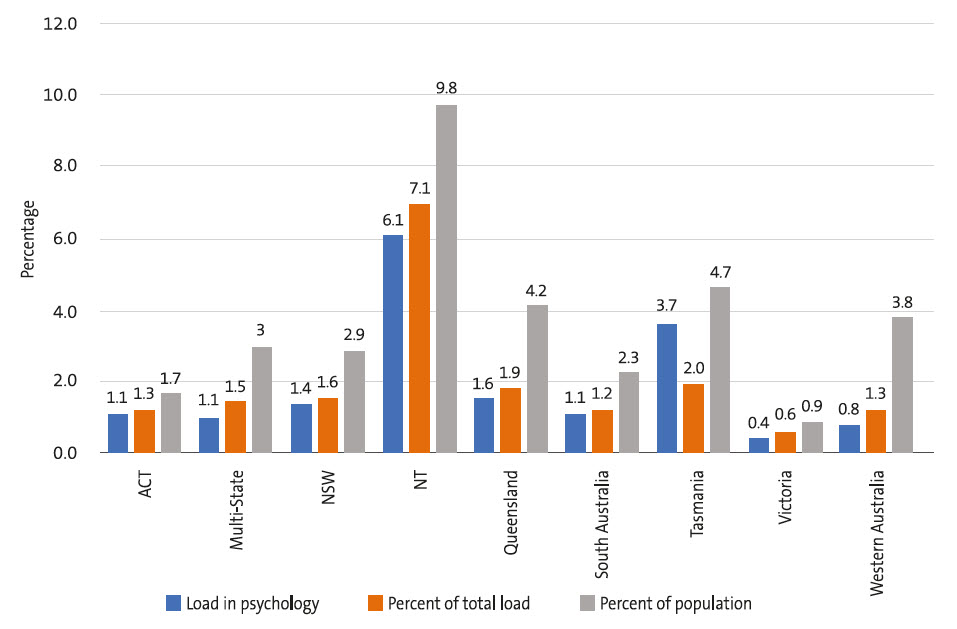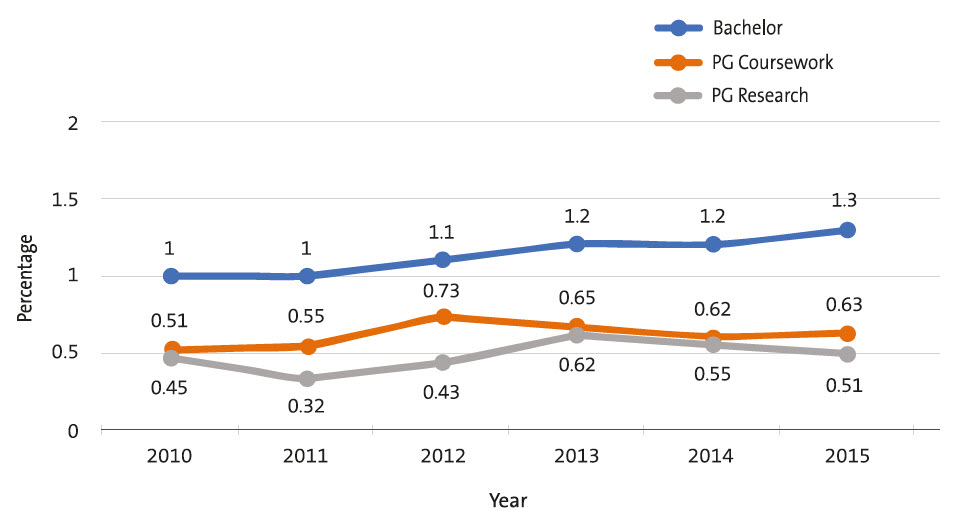Recently, the Australian Psychological Society (APS) together with colleagues from around the country completed the Australian Indigenous Psychology Education Project (AIPEP)1. The project looked at ways of making the psychology curriculum at the tertiary level more Indigenous-friendly and at increasing the numbers of Indigenous students at all levels. Following on from this project, the Heads of Department and Schools of Psychology Association (HODSPA) held a workshop in April 2017, at the University of Technology Sydney, to start implementing the ideas raised in the AIPEP.
To assist, we obtained the load figures in Indigenous enrolments in psychology from the Federal Government. This provides a baseline of the current proportion of Indigenous students taking psychology, which allows us to determine where we need to put our endeavours and to assess the overall success of the project. Note that all these figures are based upon full-time student load represented as an Equivalent Full-Time Student Load (EFTSL).
In June 2011, Indigenous Australians comprised three per cent of the total population. In 2015, they represented 1.38 per cent of total university load and 1.21 per cent of the load in psychology. This is clearly a significant shortfall, especially given the general popularity of psychology.
Figure 1 compares the total Indigenous load in psychology and the Indigenous load in all subjects, with the percentage of Indigenous people in the population of each state and territory. In all cases, except Tasmania, the percent Indigenous load in psychology is well below the percent Indigenous load in all subjects. Load in psychology in Tasmania is well above total load. The percent load in psychology is again well below the percentage of Indigenous people in the population of each state and territory. Again, Tasmania comes closest to bridging the gap. Clearly, we have work to do. First, to reach the average represented as total load in tertiary institutions and second, to reach each of the state and territory percentages of Indigenous Australians.
Figure 1. Percentage of Indigenous student load in psychology, total load and percentage of the population who are Indigenous by state and territory2.

Figure 2. Percentage of total psychology load that is Indigenous load, across the years 2010 to 2015, in undergraduate, and postgraduate coursework and research programs3.

Figure 2 outlines Indigenous load as a percentage of the total load in psychology across Australia by degree level for the years 2010 to 2015. Indigenous undergraduate load across subjects has grown slightly over this period. Undergraduate load in psychology has grown significantly over this time, from 15484 EFTSL to 21990 EFTSL, or 42 per cent, so this small increase in Indigenous enrolments is quite significant. Indigenous load in postgraduate coursework and research programs, however, has remained relatively constant over the same period in line with the overall load in postgraduate coursework and postgraduate research, which grew at 6.8 per cent and 15.7 per cent respectively. Importantly, the percentage of Indigenous enrolments at all levels are well below the population average.
These numbers may look pretty disheartening, especially if you want to increase Indigenous enrolments, at all levels, in psychology. If we were to set national targets of three per cent for each of these levels, we would be looking at increasing undergraduate load from 332 EFTSL to 698 EFTSL, postgraduate coursework load from 14 to 61 EFTSL, and postgraduate research load from 11 to 50 EFTSL. Given that there are some 40 training institutions in Australia, these are surely achievable targets.
- Emeritus Professor Nigel W. Bond FAPS, Western Sydney University
- Professor Kim Cornish MAPS, Monash University
- Professor Stephen Kent, La Trobe University
- Professor Renata Meuter, Queensland University of Technology
- Professor Tony Machin FAPS, University of Southern Queensland